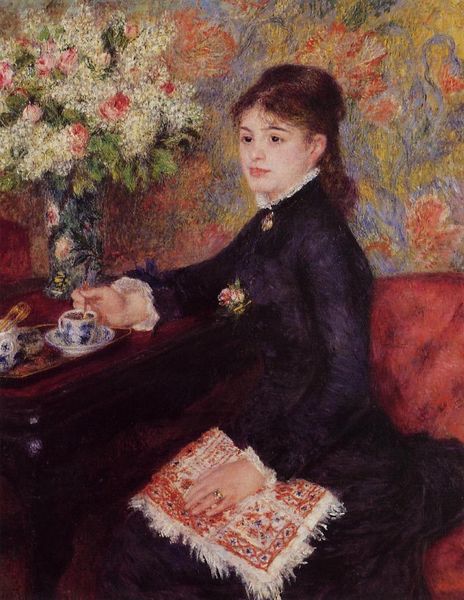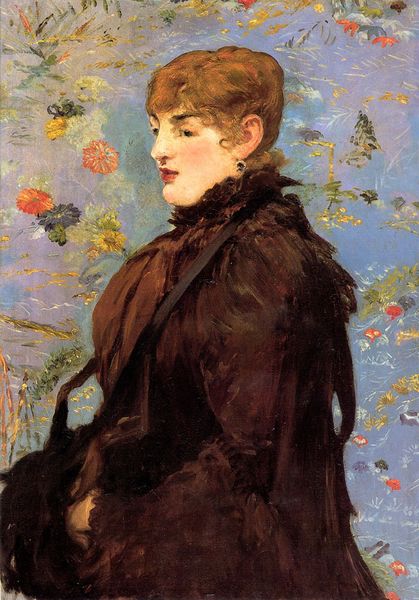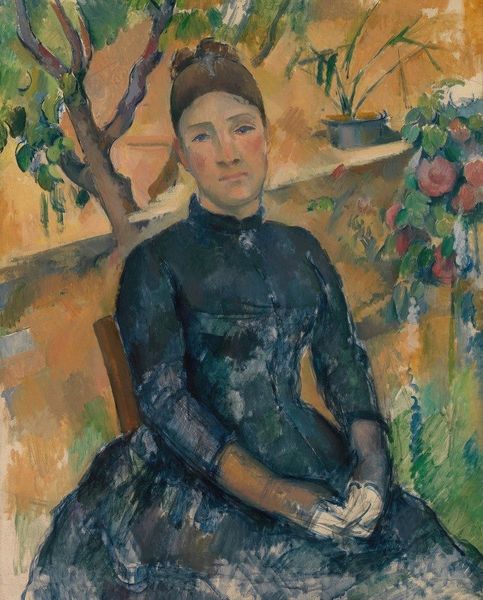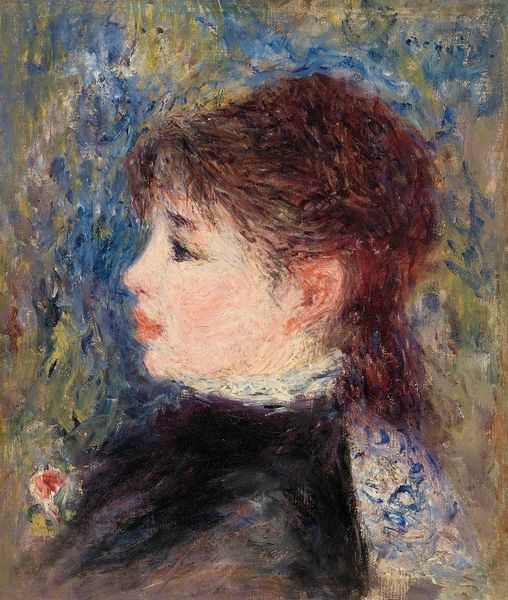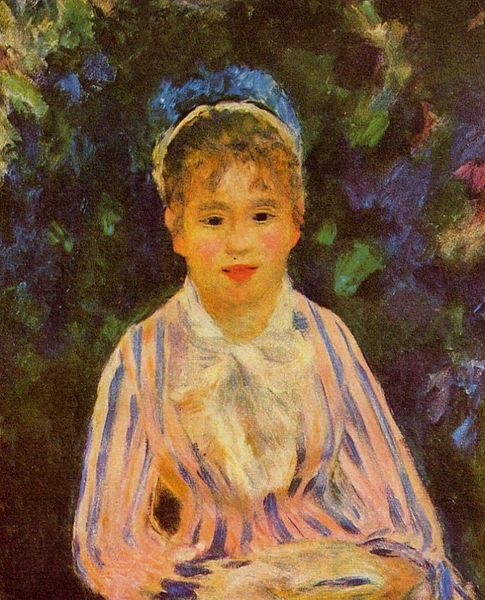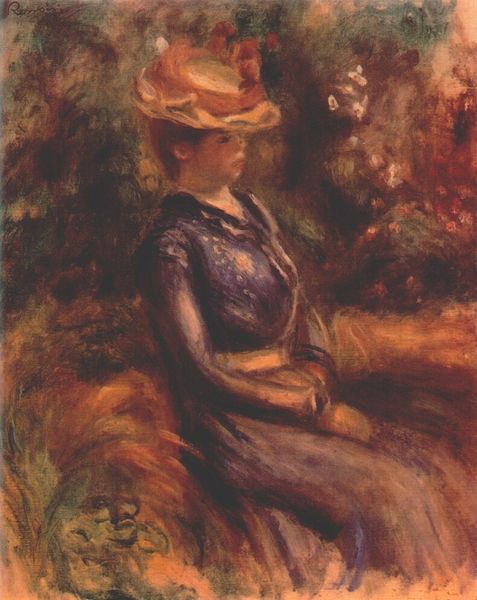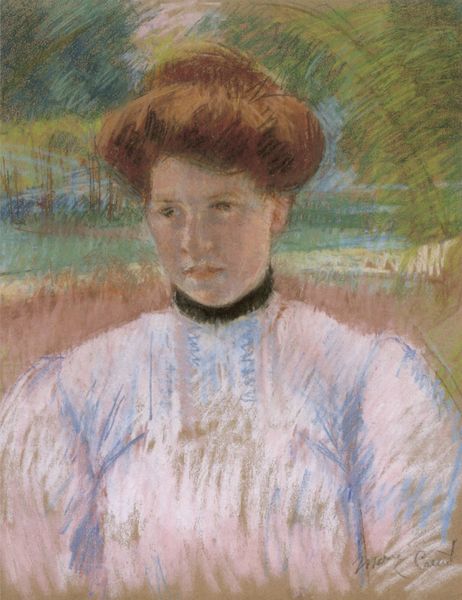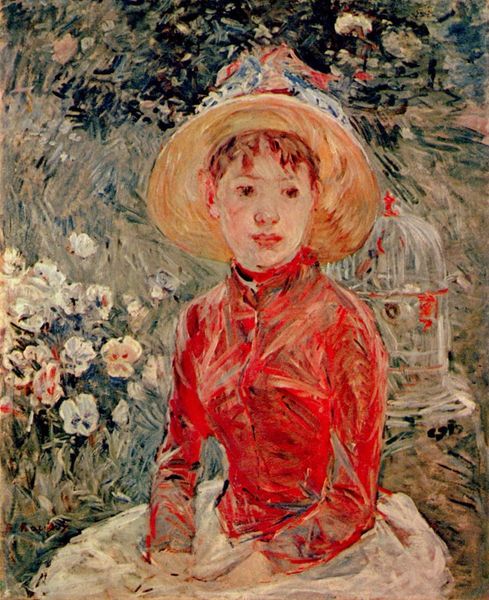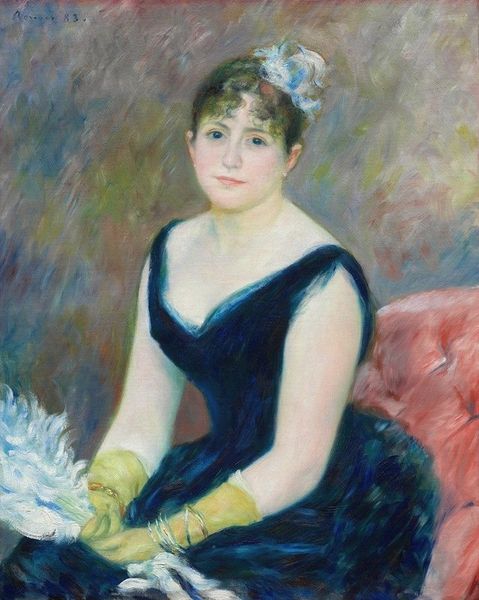
painting, plein-air, oil-paint
#
portrait
#
painting
#
impressionism
#
plein-air
#
oil-paint
#
landscape
#
oil painting
Copyright: Public domain
Editor: So, here we have Renoir’s "Summer," painted in 1875 using oil paints in the plein-air style. The first thing that strikes me is the… almost overwhelming use of paint. It's so textured, particularly in the floral background. How do you interpret this work, considering his process and materials? Curator: The materiality here is really key. Notice how Renoir isn't just depicting a woman, but showcasing the *process* of painting *en plein air*. Look at those individual brushstrokes, how the labor is so visible! It almost dismantles the traditional separation of art and craft. What do you think that signifies about the consumption of leisure in that period? Editor: That’s interesting! I hadn't considered the commentary on leisure. Is it meant to be critical? The visible labor feels...celebratory, somehow. Curator: Well, consider the social context. This painting was produced during a period of intense industrialization, where labor and leisure were becoming increasingly commodified. By emphasizing the manual labor involved in creating the painting itself – the physical act of applying paint – is Renoir perhaps suggesting a critique of that commodification, while also elevating the status of painting as a craft? What if he used cheap vs high quality paints – does that play into this? Editor: Hmm, that gives me a lot to consider. The background seemed like simply decoration at first, but now I'm thinking it's a way to comment on the industry. I’m off to read on the types of paints used at the time. Curator: Exactly! It’s not just a pretty picture, but an artwork deeply embedded in its social and material reality. And understanding the “making” can open up new ways of seeing.
Comments
No comments
Be the first to comment and join the conversation on the ultimate creative platform.
